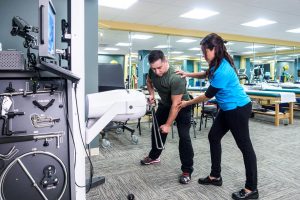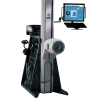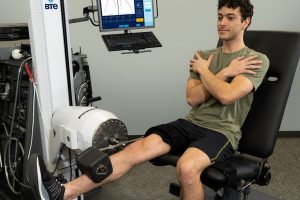
It's All About Being Functional
Treatment GuidelinesToday, documentation of functional progress is more important than ever. Presenting your treatment plans in terms of functional goals rather than strength and ROM targets increases your chances of reimbursement, and helps the client feel more engaged.
People perform best in the manner in which they are trained. To return patients to the most functional role possible, they’ll benefit most from rehabbing in a manner that best matches their everyday life – whether it’s return to work, home or sports. Just as you would rehab an injured athlete by integrating their sport activity, at a low level at first, so too will this real-life practice benefit an injured worker or a return to home-life patient.
The most effective and efficient method to physically rehab clients is to not only focus on strengthening the affected area, but also include closed-chain integrated movements that match the neuromuscular function and endurance of everyday activities. Rather than only focusing on the force production of a single muscle or muscle group, neuromotor coordination is needed as well (then you have the muscular and nervous systems working in concert). This is accomplished by using three-dimensional movements that incorporate not only the injured part but also whole-body movements with core stabilization.
By practicing the body mechanics of necessary daily routines, recovery is accelerated and results in a higher level of performance at complex tasks. The patient’s confidence in their ability to safely handle the tasks is greatly increased. People do better when they believe they can do better. Training/rehab should focus on what the client can relate to: ADLs, sports activities, or work oriented simulations in which clients can see value and then more easily recognize progress over time. When integrated motions and simulations, along with coaching in proper body mechanics, are done in a way that patients cannot do at home (not just free weights or elastic bands), it adds value to visits and illustrates the need to continue with therapy appointments throughout the recommended plan of care.
Today, documentation of functional progress is more important than ever. Presenting therapeutic exercise results in functional terms rather than isolated joint terms, and treatment plans in terms of functional goals rather than simple strength and ROM targets, result in more easily understood documentation reviewed by payers.
And the best way to produce the functional results, as well as document in meaningful terms, is with the use of isometric and/or isotonic exercises and testing methods. Isometrics (force applied without motion) and isotonics (set resistance with speed varying according to the person’s ability) are the natural resistances that we face in the real-life functions of home, sport, and the workplace. By comparison, isokinetics (speed controlled with resistance varying according to effort) does not match the reality of everyday life. Life in the real world is not isokinetic since we do not experience artificial speed controls and force that accommodates to us in normal activities. Furthermore, referrers might not understand isokinetic speed and peak torque data as it is difficult to make a link to projecting functional outcomes.
The use of isokinetics in rehabilitation and strength training has dropped considerably since its peak popularity in the 1970’s and 80’s. Today’s technology advancements have made more functionally oriented isotonic systems available. Isotonic resistance devices, due to their effectiveness at reproducing natural movements while under a fixed load, are increasingly replacing older isokinetic technology. The ability to make objective performance measurements during natural movements in an isotonic mode is a huge leap forward in the field of rehabilitation and athletic performance. And research shows that isotonic exercise, applied with moderate force levels, allow the user to work to fatigue more gradually, in a more natural way that helps induce more muscle fiber and collateral muscle activation. There are limited benefits of high load isokinetic exercise that is usually performed in only short bursts of several repetitions, but there is no doubt that a return to function is best accomplished with functional exercises and natural movements.
John Vermette
Director of Provider and Product Management





